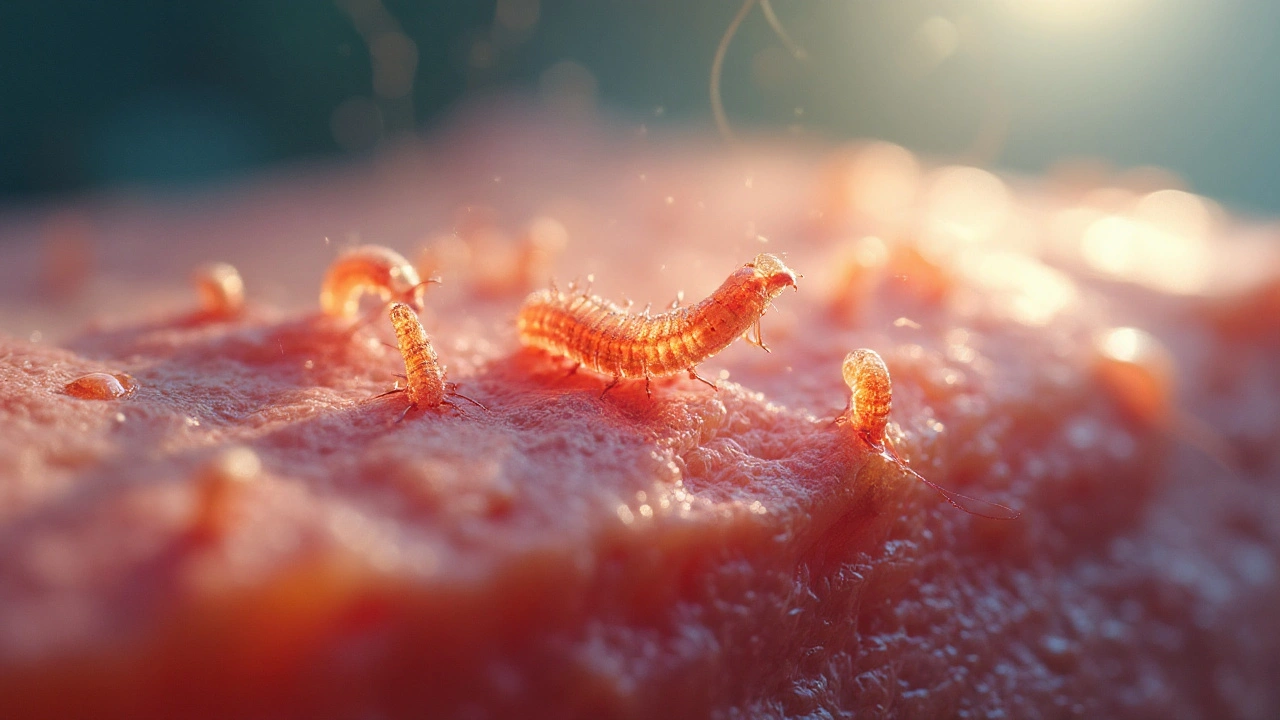Cutaneous Larva Migrans – What It Is and How to Stop It
If you’ve ever walked barefoot on a warm beach and later noticed a winding, itchy line on your skin, you might have dealt with cutaneous larva migrans (CLM). It’s a skin infection caused by tiny hookworm larvae that burrow just under the surface. The result is a snake‑like track that itches like crazy and can last weeks if left alone.
How the parasite gets under your skin
Animals such as dogs and cats carry hookworms that lay eggs in their feces. In warm, sandy spots the eggs hatch into larvae, waiting for a chance to hop onto a person. When you step or sit on contaminated sand, the larvae slip through tiny cuts or hair follicles and start migrating.
What the rash looks like
The hallmark sign is a raised, red line that twists and turns as the worm moves. It often appears on the feet, calves, or buttocks – basically wherever the skin touched the ground. The itching is intense, and scratching can make secondary infections jump in.
People usually notice the rash a day or two after exposure, but sometimes it takes up to a week. If you see a creeping line that keeps getting longer, it’s probably CLM.
When to see a doctor
A quick doctor visit can end the misery fast. Doctors often diagnose CLM by looking at the track and asking where you’ve been. In most cases, they’ll prescribe a single dose of albendazole or ivermectin, which kills the larvae within a day. If you can’t get those meds, a topical cream with thiabendazole also works, though it’s less convenient.
If the rash gets swollen, oozes pus, or you develop a fever, it’s time to get medical help right away – those signs point to a secondary infection.
Preventing future outbreaks
The easiest way to avoid CLM is to stay clear of sand that might be contaminated. Wear shoes or flip‑flops on beaches, especially in tropical areas where pets roam free. If you’re camping, lay a towel or a mat before sitting down.
Kids love digging in the dirt, so keep an eye on them and teach them to wash their hands and feet after playing outdoors. If you’re traveling to places known for hookworm, consider a short course of ivermectin as a preventive measure – talk to your doctor before you go.
Quick home care tips
While you wait for meds, clean the area with mild soap and water to lower infection risk. Applying a cool compress can calm the itching, and an over‑the‑counter hydrocortisone cream may reduce inflammation.
Resist the urge to scratch – it can open the skin and invite bacteria. If the itch is unbearable, antihistamines like cetirizine can give temporary relief.
Bottom line
Cutaneous larva migrans is annoying but treatable. Spot the winding rash early, get professional medication fast, and protect your feet when you’re near sand. With those steps, you can enjoy beach trips without the dreaded itchy trails.
Skin Parasites: What You Need to Know About Mites, Larvae & Eggs
Learn how skin parasites live or lay eggs under your skin, spot symptoms, get proper treatment, and stop future infestations.
© 2025. All rights reserved.

